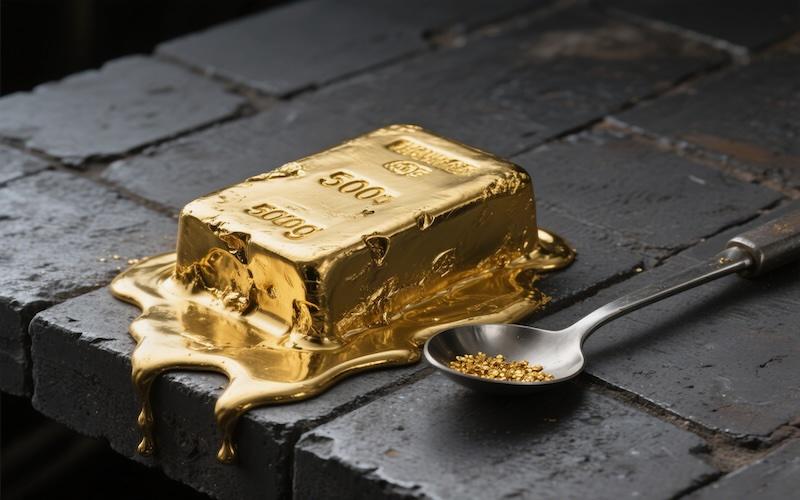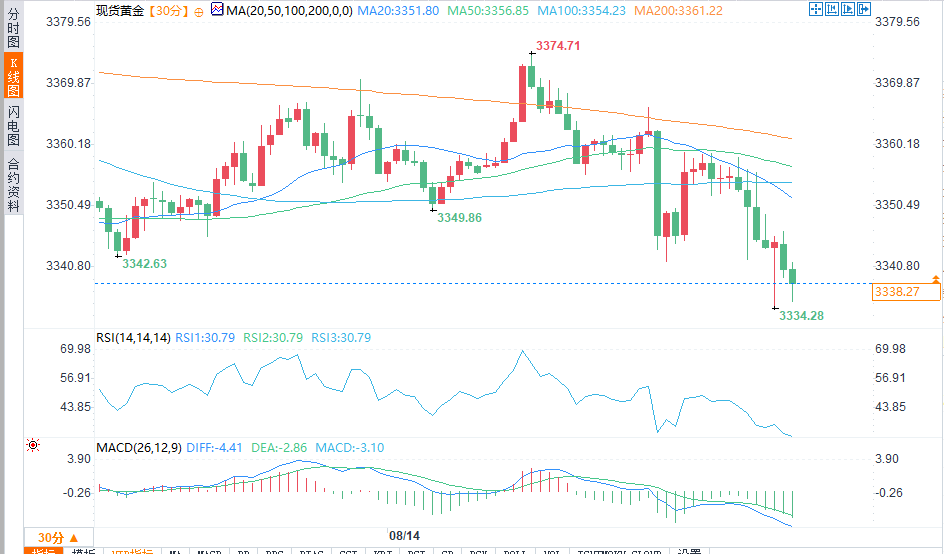The U.S. Producer Price Index (PPI) surged 0.9% in July, putting pressure on gold prices.
2025-08-14 23:25:52

The sharp rise in the U.S. producer price index (PPI) has also brought some volatility to the gold market because the market expects that high inflation will make it difficult for the Federal Reserve to cut interest rates significantly in the second half of this year.
Data released by the U.S. Department of Labor on Thursday (note: the original text does not specify the specific date, based on the context, it is inferred that it is the Thursday when the PPI data is released) showed that the overall Producer Price Index (PPI) surged 0.9% month-on-month in July, after being flat in June. This latest inflation data far exceeded market expectations, as the previous consensus forecast was that the PPI would only rise by 0.2% month-on-month in July.
Meanwhile, in the 12 months ending in July, the overall PPI rose 3.3% year-on-year, the largest year-on-year increase since February 2025 (up 3.4% year-on-year).
Similar to the trend in consumer prices, high inflation is also beginning to take root in the broader wholesale sector. The core PPI, which excludes volatile food and energy costs, rose 0.9% in July after being flat in June.
The report showed that core PPI rose 2.8% year-on-year in the past 12 months.
The report pointed out that more than three-quarters of the broad-based increase in the PPI in July was due to an increase in the final demand services index, which rose by 1.1% month-on-month in July. Previously, the market consensus for the final demand services index was a month-on-month increase of 0.2%.
The gold market initially experienced a new round of selling pressure after the inflation data was released. As of 23:20 Beijing time, the spot gold price was $3,339 per ounce, down 0.50% on the day.
While high inflation puts pressure on gold prices by raising the opportunity cost of holding it, analysts point out that the logic is now more complicated - because high inflation also poses risks to economic activity.

(Source of spot gold 30-minute chart: Yihuitong)
Mohammed Taha, financial market analyst at MH Markets, said: "The economic data suggests that inflationary pressures are still continuing. This may put pressure on gold prices as investors adjust their positions for the possibility of high interest rates for a long time. Looking ahead, the key question is: how long can the Fed maintain its tightening policy before the economy slows significantly? If inflation remains high, gold is likely to remain supported as a hedge against long-term price instability. If the market focus shifts to 'the economy may fall into recession' or 'the Fed's easing policy stance', gold prices are expected to stabilize quickly and may even challenge the $3,450 to $3,500 per ounce range."
Some analysts predict the US economy will face a "stagflationary" environment—one characterized by high inflation and slowing economic growth. They say this environment is perfect for gold because the Federal Reserve will be forced to cut interest rates, which would drive real interest rates significantly lower. (Note: Real interest rate = nominal interest rate minus inflation rate. Rate cuts typically lead to lower nominal interest rates. If inflation remains high, real interest rates will fall further, increasing the appeal of gold as a non-interest-bearing asset.)
Although the July PPI data far exceeded expectations, the market still expects the Federal Reserve to cut interest rates next month (note: the month after the data is released).
- Risk Warning and Disclaimer
- The market involves risk, and trading may not be suitable for all investors. This article is for reference only and does not constitute personal investment advice, nor does it take into account certain users’ specific investment objectives, financial situation, or other needs. Any investment decisions made based on this information are at your own risk.





















